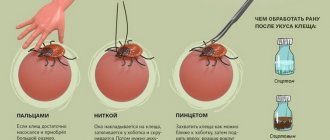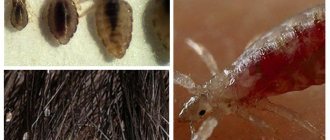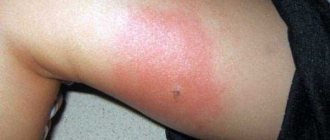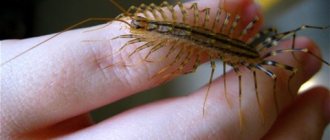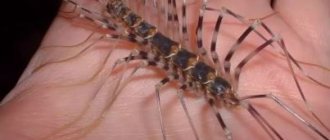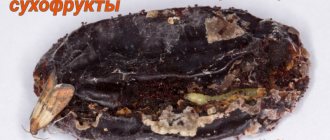The onset of the warm season is characterized not only by the hot sun and bright green grass. An integral element of this period is the abundance of flying and crawling insects.
Some of them live in a specific area without appearing in residential areas. Others, on the contrary, cause inconvenience to a person right in his home.
An unpleasant incident during the designated period is the penetration of midges into the ear canal. Often the situation occurs during outdoor recreation. Of course, this is a random event, because a fly is unlikely to plan an attack on a person.
Despite the discomfort that has arisen, you should not worry about your safety : the eardrum acts as a kind of partition that will not allow the midge to fly too deep.
How to tell if an insect has gotten into your ear
Before carrying out any manipulations at home, you should make sure that the cause of the unpleasant sensations is actually a living creature.
Here are the signs that indicate this:
- tickling inside the ear canal;
- buzzing and noise in the ear;
- pain and discomfort;
- congestion and hearing loss;
- dizziness;
- nausea and vomiting;
- swelling if an insect bites and causes an allergic reaction.
A visual examination can also confirm the presence of a foreign substance in the auricle, but not always. To do this, pull the edge of your ear to the side and up and shine it with a flashlight. The light can attract the midge, and it will fly out on its own.
What not to do
Independent attempts to remove an insect that has crawled into the auricle can result in deterioration or complete loss of hearing.
It is highly recommended not to pick at the outer ear with a cotton swab or toothpick, as this can lead to a number of unpleasant consequences.:
- injury to the skin with subsequent bleeding.
- Damage to the ear septum between the outer and middle ear (tympanic membrane).
- Partial extraction of living creatures. After some time, the remains of the insect’s body will decompose, which will cause infection of the ear canal.
- Pushing the midges even further, deeper into the ear canal.
An important nuance is to make sure that it is an insect and not some inanimate object that is in the ear cavity. Otherwise, water or other liquid will cause it to increase in size and it will be extremely difficult to remove it.
Please note: if there is a history of previous mechanical damage to the eardrum, rinsing the ear with water is prohibited, since fluid may enter the middle ear. Then the extraction of living creatures must be entrusted to a competent specialist.
What not to do
Under no circumstances should you try to remove an insect from your ear using a cotton swab, tweezers, sharp objects, etc. It makes sense to try with tweezers if it is visible to the naked eye, and then there is a risk that it will get scared and go deeper.
All other attempts to remove the insect from the ear using an object may result in it being pushed towards the eardrum. As a result, only a doctor can remove it.
Such manipulations can injure the ear canal and eardrum. Or it will be possible to remove part of the bug, but part will remain in the ear, causing inflammation.
Seeing a doctor
If the insect is close to the exit, then the methods described above will definitely help you, but if the midge has reached the eardrum, you should immediately contact an otolaryngologist rather than try to pull it out yourself.
The doctor will determine how to remove the insect from the ear during the initial examination. The method depends on the size and distance of the midge. Usually, the ear canal is washed with water or a furatsilin solution; in some cases, the midge can be removed with tweezers.
Preparing for the procedure for removing an insect from the ear
Before you begin the extraction procedure, you should make sure that it is the insect that got into your ear. After all, pain, discomfort, rustling and extraneous sounds may indicate other hearing problems.
It is important to try to determine how deep the insect has climbed into the ear. The deeper it is, the more difficult it is to remove it yourself, and manipulations near the eardrum can lead to injury. In this case, you should not take risks, but consult a doctor immediately.
The person should take a comfortable position so that ear procedures are easy to carry out. The victim, and in the case of a child, his parents, must remain calm. Worried and panicking, a person acts abruptly, makes many unnecessary movements, and this only worsens the situation.
Reasons for appearance
The causes of the appearance of a foreign body are divided into two categories: endogenous, due to which the formation of a foreign body occurs directly in the ear, and exogenous, when foreign bodies enter the ear canal from the outside. The most common causes of the problem fall into the second category.
The following endogenous factors cause the disease:
- parasitic lesions - a number of round and tapeworms are able to migrate into the tissues of the inner or middle ear, as well as the external auditory canal. Adult parasites or their larvae can be found in tissues;
- increased secretion of the auditory glands - in this case, sulfur is released in excessive quantities, against the background of which a foreign body forms in the form of sulfur plugs.
Exogenous reasons are:
- traumatic ear injuries;
- hygiene procedures carried out in violation of the rules;
- violation of the rules for wearing hearing aids, which can cause damage to them;
- non-compliance with safety regulations at work and while outdoors;
- placing a foreign body in the ear out of curiosity - this action is typical for young children and mentally ill people who are unable to assess the risk of their actions and their consequences for health;
- self-harm that is carried out accidentally or intentionally.
Regardless of the cause of the foreign body, it requires removal and, if necessary, further therapy to eliminate inflammation.
Insect removal
If an insect has not entered the ear deeply, it may well get out on its own. The main thing is to give him this opportunity. Sit comfortably, place a bright light source near your ear, do not touch the ear with your hands, do not bring objects - this can frighten the midge and provoke it to climb deeper.
You can try pulling your ear up and to the side, tilting your head in the right direction and jumping, shaking your head. This may be enough for deliverance.
If the method does not work and the midge remains inside, the first thing you need to do when removing it is to kill it. This alone will bring relief to the victim, because the main cause of nausea, dizziness and severe discomfort is the movement of the creature and the sounds it makes. This can be done using one of the traditional methods.
Living and non-living foreign bodies
All foreign bodies that may end up in the ear are divided into two categories - living and non-living. The former are most often diagnosed in the warm season in people returning from outdoor recreation.
Living foreign bodies in the ear canal include various insects, mites, leeches and the larvae of some parasites. They enter the ear when a person lies on the grass or swims in an open body of water. Constant movement of a living object causes pain and a persistent tickling sensation. Movement irritates nerve endings and can cause vomiting and dizziness. Children often experience seizures due to a living foreign body present in the ear.
A number of insects are especially dangerous because they release toxic substances. Their action causes necrosis of the ear canal mucosa, which significantly complicates the patient’s condition. In severe cases, hospitalization may be indicated. If a foreign body of this nature gets into the ear, then signs of general intoxication of the body may appear.
Non-living foreign bodies in the ear are various stones, beads, pieces of plastic, metal elements, wood chips or sand. Also, lumps of cotton wool may remain in the ear or wax plugs may form. If a non-living foreign body does not injure tissue, then it poses significantly less danger than a living one. When the sharp edges of an object damage tissues, infection occurs, which poses a serious threat. Because of this, if you suspect a foreign object is in the ear, you need to urgently seek medical help. In some cases, an external examination does not allow one to determine the presence of a foreign body, which is why it is not always possible to identify the problem on one’s own. If the object is located deep, a full medical examination will be required.
Folk remedies for removing insects from the ear
There are folk methods on how to get rid of living creatures stuck in the ear canal. All of them involve rinsing the ear with different means:
- plain water;
- camphor oil;
- hydrogen peroxide.
Using a small syringe or pipette, you need to drip warm water into your ear, wait a couple of minutes, then tilt your head in the desired direction so that the liquid flows out on its own. The bug will flow out along with it.
Camphor oil acts more effectively as first aid, quickly killing midges and promoting better gliding. You should treat it in the same way as with ordinary water, slightly heating it beforehand. 3-5 drops of the product are enough.
If the oil does not work, you need to rinse your ear with hydrogen peroxide. The abundant foam it produces will effectively clear the passage of everything unnecessary. If all the measures taken are in vain, you need to go to the doctor. The doctor will act in a similar way. The difference is that he has tools that make it easy and painless to remove the “uninvited guest.”
What to do
Since the skin in the ear canal renews itself as quickly as nails, it is likely that the invading insect will be removed naturally. However, if there is discomfort and unpleasant sensations, you should take care to remove the parasite from the ear canal.
If a midge has flown into your ear, it is still not recommended to do something on your own. The best option is to contact a specialist who will not only remove the insect, but also treat the ear cavity to avoid the development of infections.
If this is not possible, it is worth providing the victim with qualified first aid.
The main measure of this is killing the insect. Please note: you should not carry out this procedure yourself.
Since the midge moves and buzzes, its presence in the ear causes significant discomfort:
- dizziness.
- Swelling of the affected area.
- Soreness.
- Nausea, vomiting.
- Short-term noticeable hearing loss.
- Headache.
To calm the uninvited guest, it is recommended to drop a few drops of alcohol tincture, mineral or any vegetable oil into the ear canal.
The insect will drown in the liquid, and the unpleasant symptoms will gradually disappear. In addition, the use of alcohol will provide additional disinfection.
Preparing to remove an insect
If a fly has flown into the ear, but has only climbed to a shallow depth, it is able to get out of the ear canal on its own.
Some measures will help speed up this process:
- bright light, such as from a table lamp, aimed directly at the affected area. It is believed that it will attract a fly and it will get out.
- No external influence on the ear canal. Do not put fingers or foreign objects into your ear.
- The sun's rays, since some types of insects love heat very much.
Sometimes, to get rid of it, it is enough to shake your head, as if water gets into your ears, and the affected ear should be directed downward. If the indicated manipulations do not bring results, the insect will have to be removed mechanically.
Insect removal
Since it is necessary to remove the parasite from the ear cavity as soon as possible, the simplest and most conservative method is to move the earlobe, tilting it towards the floor. If the midge has not managed to get deep enough, it will fall out of the ear canal under the influence of gravity.
The essence of the process of removing the uninvited guest is to wash the ear canal. All manipulations should be carried out slowly and calmly, without making sudden movements. It is better to take a sitting or lying position with free access to the source of the problem.
At home, the following preparations are most effective for rinsing::
- Camphor oil.
The most popular way to get rid of midges that have flown inside the ear. The main ingredient should first be heated a little, then dropped into the affected ear (4-5 drops).
Wait a little for the oil to bring the desired result, and then let the product flow out, turning your head in the right direction. Usually this method is enough to get rid of midges, which simply flow out along with the oil.
- Hydrogen peroxide.
The effectiveness of this product is explained by the formation of a large amount of foam. It will not only push the flying living creatures out, but will cleanse the ear canal of excess wax.
If these drugs do not bring the desired result, you should use plain water.:
- The pure liquid is heated to a warm state.
- The auricle is pulled back, thereby aligning the ear canal.
- Drop liquid into the affected ear using a pipette, a syringe without a needle, or a small syringe.
The principle of operation is similar to the method with oil.
A mandatory element of any of the above methods is a subsequent contact with a medical professional. If it was not possible to remove the insect from the ear on your own and with improvised means, the doctor will perform this procedure with a special device.
Recovery measures after removing an insect from the ear
After you have managed to remove the insect from your ear at home, you need to carefully examine the “culprit” of the incident. It is important to make sure that it is completely removed and no part of it remains inside.
The victim, especially if it is a child, needs to be provided with peace after the stress experienced and not engage in special stress. The work of the vestibular apparatus disrupted by the insect's interference will be restored quickly, but gradually, you need to wait and rest.
It is important to carefully monitor the well-being of the person who has an insect in the ear for several days. If inflammation begins, swelling appears in the ear, and the temperature rises, this means that there is still part of the bug left in the passage, or it has managed to bite.
If there is pain in the ear, hearing is impaired and is not restored, blood is released, this may indicate damage to the eardrum. In all these cases, you need to consult a doctor.
Worst outcome
Otolaryngologist, professor at the I.M. Sechenov University Yuri Ulyanov explained to “360” that the insect primarily injures the eardrum. Once inside the ear, it cannot find a way out.
“With their paws [insects] tear the skin of the ear canal, it is very thin, <...> and the inflammatory process of the entire passage begins,” he said, adding that in the worst case scenario, the membrane will simply burst.
If it is not possible to quickly seek help from a specialist, then you can resort to a long-known method: pour oil into your ear. The insect will suffocate, but it’s better not to reach it yourself - you can push it even further.
“The ear is rinsed with a stream of water - like a cerumen plug is rinsed. They direct the jet, it hits the membrane, comes back out and washes everything away,” Ulyanov noted.
Classification of foreign bodies of the ear
In medical practice, a classification of foreign bodies is used according to the mechanism of occurrence and the nature of the foreign body. Regarding the mechanism of occurrence, endogenous and exogenous foreign bodies are distinguished. Endogenous foreign bodies are formed directly in the ear, and exogenous foreign bodies enter the ear from the external environment. The bulk of foreign bodies are exogenous, but according to statistics, endogenous foreign bodies are also quite common; they are cerumen plugs formed in the ear canal.
Classification of foreign bodies by nature implies the division of all foreign bodies into two large groups: living (moving) and non-living (inert). Living foreign bodies in the ear include various types of insects that come from the air or by entering the patient's ear while he is sleeping or lying in the grass, as well as larvae and leeches that enter the ear canal while swimming in bodies of water. Non-living foreign bodies can be household items (button, battery, bead, piece of polystyrene foam, paper, cotton wool, small parts of construction toys and toys), also pebbles, plant seeds, sand, etc.
Why does a mosquito fly into your ear?
A blood-sucking parasite can enter the hearing organ for two reasons:
- Accident. Most often this happens on the street, when a person walks during the day in a wooded area, near water bodies. Disturbed mosquitoes fly up from their shelters and move chaotically, finding temporary refuge in the ear, since the inside of it is dark, warm and humid.
- Intentional hit. After the ectoparasite has drunk a sufficient amount of blood from a person, it looks for a place to rest and digest food. In some cases, the insect does not fly far, but hides in close proximity to the victim, including choosing the ear as a refuge.
Signs of the absence of a mosquito in the ear
In order to determine the presence of an insect in the ear, you can trust your own feelings. The situation will be more complicated if the mosquito ends up in the ear of a small child. However, here you can simply observe: the child’s hearing will begin to deteriorate, he will begin to react poorly to voice and sound, he will often shake his head, twist his ear and complain of pain, more serious signs are the onset of inflammation, dizziness, weakness and the release of more earwax . The child may not complain about anything for several days; unpleasant sensations appear after the inflammation process begins.
Preventing mosquito bites
To avoid the need for treatment, it is better to follow the rules of prevention in a timely manner:
- Use modern means of protection against mosquito bites. For example, DEET mosquito repellent spray. The aerosol form makes it easy to apply the product to skin or clothing. Thanks to the water-based formulation, it does not dry out the skin and does not contain alcohol.
- Try not to travel outside the city during periods of mosquito activity.
- Do not use perfumed products or wear bright clothes.
- Do not be near bushes and trees, as well as bodies of water.
Non-living foreign body: symptoms, diagnosis, removal
With a non-living foreign body in the ear, sometimes the patient may not feel any symptoms; this happens if a small and smooth object that does not injure the skin of the ear canal and the eardrum gets into the ear. Foreign bodies of larger sizes block the passage of sound waves through the auditory tube, causing decreased hearing; in this case, patients complain of congestion in the ear.
Symptoms of foreign bodies
If a foreign body has sharp protrusions, injury to the skin of the external auditory canal and eardrum often occurs, after which bloody discharge may appear from the ear, and the patient feels pain in the ear. A pointed foreign body can perforate the eardrum, which is fraught with the development of acute otitis media, which can turn into a purulent form.
Any foreign body has an irritating property in relation to the skin of the external auditory canal, which is manifested by hypersecretion of sulfur and sweat glands. Increased humidity in the ear canal contributes to the swelling of some foreign bodies (beans, corn, peas) and complete closure of the lumen of the ear canal, which provokes discomfort, pain, a feeling of fullness in the ear and a significant decrease in hearing. With a significant increase in the foreign body, compression of the tissues in the ear occurs, which entails their necrosis. Such a foreign body becomes wedged into the ear canal, making it difficult to remove. A battery that gets into the ear is especially dangerous for the patient; it tends to conduct electric current in a humid environment and kill nearby tissues.
In case of untimely removal of a foreign body from the ear, an inflammatory reaction develops. Patients experience hearing loss, ear pain, and mucopurulent discharge from the external auditory canal. In severe cases, body temperature rises, headache occurs, and the patient’s general condition worsens. Swelling of the ear canal develops, which further impedes the removal of the foreign body.
Diagnostics
If the foreign body is large, it can be seen with the naked eye. During the examination, the otolaryngologist uses a funnel or otoscope; to improve visibility in adult patients and adolescent children, the auricle is pulled down and back with one hand, and when examining small children, the auricle is moved down and back. If you do not seek help in a timely manner, swelling increases in the ear canal, which complicates visualization and removal of the foreign body. If the inflammatory process is purulent in nature, a bacteriological analysis of the discharge is performed in order to determine the sensitivity to antibacterial drugs for their correct administration.
If a foreign object enters the ear through trauma, the patient undergoes an X-ray examination of the skull. An important point in diagnosing a foreign body in the ear is differential diagnosis, the purpose of which is to exclude a tumor, perforation of the membrane, damage to the external auditory canal and hematoma.
Treatment
It is very important to remove the foreign body as soon as possible before an inflammatory reaction begins to develop. It is highly undesirable to try to remove a foreign body on your own, because in this way you can only harm your own body.
The procedure for removing a foreign body from the ear
If there is no suspicion of perforation of the eardrum, which is determined during examination and otoscopy, removal of the foreign body in an ENT office begins with washing the ear canal. Rinsing is performed with distilled water, heated to 34-360C, using a Janet syringe (water is drawn into the syringe and rinsing is performed under slight pressure). After rinsing, the doctor removes any remaining water in the ear canal using a turunda. In addition to perforation of the membrane, rinsing is prohibited if there is a foreign body in the form of a battery or flat, thin objects that can move deeper under the pressure of water.
Also, removal of a foreign body in the ear can be carried out using a thin ear hook, the curved end of which is wound behind the foreign body with a slow, smooth movement, thus picking it up and then pulling it out. When removing swollen seeds, the ear is instilled with 96% ethyl alcohol, which promotes dehydration and reduces the size of the foreign body.
In most cases, removal of a foreign body in the ear does not require the use of anesthetics, but if necessary, this option is possible. For pain relief during the removal of a foreign body, local anesthetics (ultrocaine, lidocaine) are used for an adult patient; if it is necessary to use anesthesia for small children, the method of general sedation is used. A very important stage in removing a foreign body from the ear is the subsequent, after removal of the object, careful examination of the skin of the ear canal and eardrum for damage and perforation (this is important for determining the correct tactics for further treatment). After the examination, a turunda with calendula tincture and Levomekol ointment is placed in the ear; it is recommended to put an antibacterial ointment on the turunda in the ear in the next 3-4 days, as well as a repeat examination the next day. In case of developed complications, in the presence of significant swelling and strongly wedged foreign bodies, surgical operations are performed through a small incision behind the auricle.
Can a cockroach get into the ear of a sleeping person?
Particularly suspicious people are often interested in whether a cockroach can crawl into the ear of a sleeping person. They will be disappointed when they find out that this route of entry is possible. Arthropod insects have a special body structure that allows them to penetrate into the narrowest spaces.
In adults, the diameter of the ear canal is usually 9-10 mm. This is enough for the insect to penetrate.
Sometimes pests perceive the ear hole as a secluded place to hide. But he won’t be able to get out of there without outside help. Sometimes children also become victims of the penetration of such parasites.
Although they have smaller ears than adults, individuals of the parasite can be of different sizes, so sleeping children are also at risk.
Symptoms of an insect in the ear
So the symptoms show themselves as follows:
- Attacks of acute pain and unpleasant sensations reminiscent of tickling inside the ear.
- The patient feels congestion in the ear canal and a decrease in the level of hearing.
- Attacks of dizziness and mild nausea, and in particularly susceptible patients the gag reflex is a consequence of irritation of the nerve endings located inside the ear.
- If living creatures emit chemical or other biological, irritating compounds, swelling, necrosis of the dermis, and, less often, bleeding caused by bites are possible.
- Inflammation occurs very rarely - it is more likely a consequence of complications, as well as the manifestation of seizures from irritation of nerve endings.
Preventive actions
Is it even possible to avoid insects getting into a child’s ear and nose? Can any preventive measures be used? In most cases, it is unrealistic to protect your baby from flying and crawling bugs and spiders, since in the summer they are almost everywhere. It is impossible to build a successful career without education; in fact, no employer will talk to a person without a degree. You can spend years gaining theoretical knowledge, but there is a real opportunity without the slightest risk
How to remove a midge that has gotten into a child’s nose?
The insect can get not only into the ear, but also into the child’s nose. This situation is quite common, since in the summer it is enough to walk down the street with a baby for an uninvited guest to end up in your nose. In addition, the baby is able to push an ordinary bead into it.
First of all, you should examine the child’s nose and decide whether you can cope on your own or whether medical advice and help is needed.
If the foreign body is not stuck very deeply and is visible to the naked eye, then you can do it yourself.
If the child is over 5-6 years old, then the order of your actions may be as follows:
- Invite your child to breathe as deeply as possible, exhaling forcefully through the nose. This method will work if the bug has crawled into the nostrils not too far.
- Rinse your nose and nasopharyngeal cavity with warm, slightly salted water. You can use preparations containing sea salt.
- Ask your child to blow his nose only through the nostril into which the insect has entered or there is any foreign body (for example, a bead).
If an insect has entered the nose of a newborn or infant, instill vasoconstrictor drops to relieve swelling of the mucous membrane. In addition, there are special nasal aspirators that can be used to suck out mucus from the nose. They are also suitable for solving the problem.

